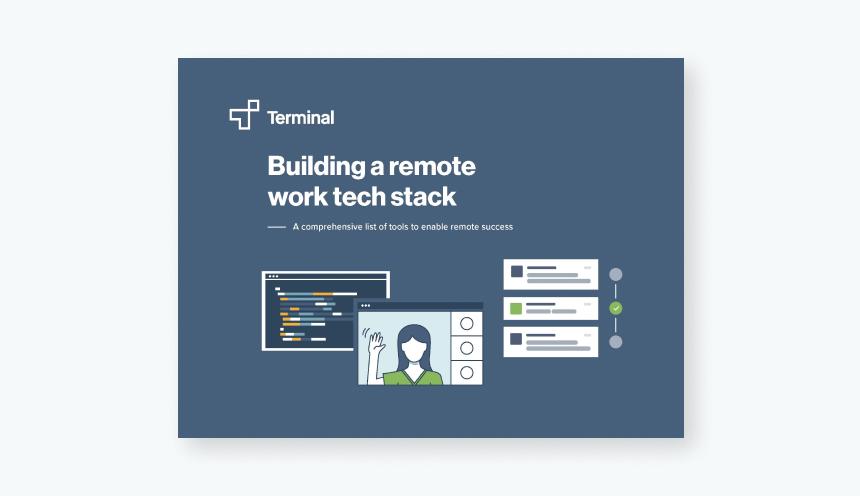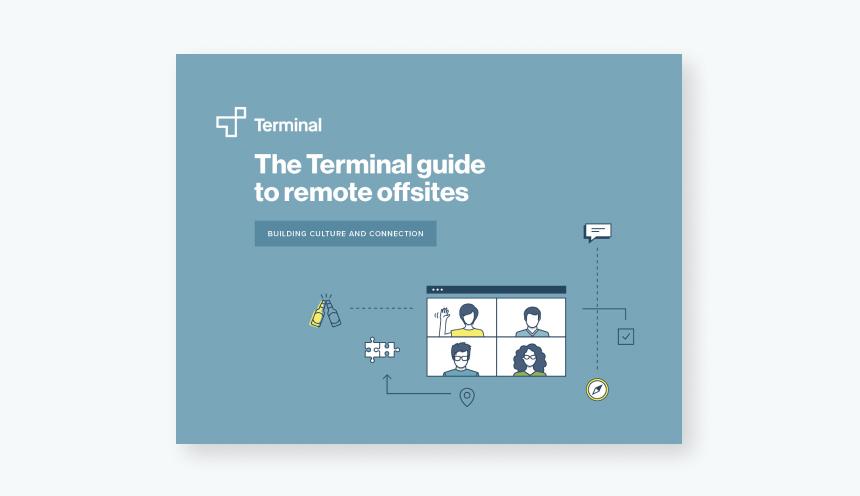
Remote how-to’s | Blog Post
Preparing a remote performance review? Use these six tools for engineering managers
Linzi Nield
Share this post
In recent years, poor structuring of performance reviews has caused them to get a bad wrap as stress-inducing events for employees.
In fact, a study from TriNet found that “62% of Millennials felt blindsided by a performance review,” and that 74% felt “in the dark” about how their bosses and coworkers viewed their work performance.
Engineering managers, however, hold the power to take proactive steps year round to make performance reviews positively impactful, which is particularly important today for remote engineers who are often subject to feelings of isolation.
Engineers are known for being motivated by a combination of autonomy and goal-oriented projects, which is why for many engineers to thrive they need managers who can foster these two facets of their personality.
With the right performance review structuring, these pulse checks can act as a North star for your direct reports, keeping them focused, motivated, and on track to be successful at their jobs and in achieving their own professional goals.
Here are six steps to ensure that your annual performance reviews do not blindside employees but are growing opportunities.
Avoid making annual performance reviews a one-day affair
Just as your direct reports work year round, as a manager you too should be tracking the performance of your remote engineers on a regular basis. Beyond creating weekly or bi-weekly 1:1 check-ins, creating quarterly goals tied to smaller quarterly performance meetings can be incredibly motivating and focusing for remote engineers.
These smaller check-ins help you catch any indicators of poor performance early on, and also make sure that you truly understand the projects that your employees are involved with and how they are progressing. Additionally, these moments are even more important with remote employees for injecting small pauses for positive feedback or suggestions, which can be overlooked without in-person meetings.
By combining quarterly goals with consistent check-ins you will not only set yourself and your direct report up for success leading into an annual review, but also center the meeting with a significantly clearer picture of the individual’s actual work throughout the year.
In the chance that you do need to deliver considerable constructive feedback, the 1:1’s held over the course of the year will have helped put in place a strong foundation to hold these more challenging conversations.
Focus on measuring the most relevant metrics
While hitting certain performance metrics are critical to job success, goals and KPIs outlined earlier in the year can change or become deprioritized by shifting organizational priorities. This is especially true with the current unpredictable nature of business due to COVID.
Before collecting performance data, make sure to pause and reassess the KPIs that you’re holding your direct report accountable to. You can also create a mix of concrete metrics with softer ones, like being a collaborative team member, or going the extra mile on a project.
Additionally, collect diverse and cross-departmental feedback from the individual’s coworkers before the review. This opens the door to include multiple perspectives and therefore highlight wins across different projects, and showcase meaningful team member relationships that have been cultivated. Anonymous tools such as Honestly can be helpful for collecting this type of feedback.
Have empathy for today’s extraordinary times
Leadership and management demonstrating empathy has never been more important as it is today.
From having kids at home 24/7, to extreme social isolation, and more, COVID has ushered in unprecedented times for full time workers who are balancing more than many thought possible.
For engineering managers, empathetic leadership is a powerful management tool to utilize. One study on empathy in the workplace by the Center for Creative Leadership (CCI) revealed that managers who demonstrate increased levels of empathy for their team were ultimately perceived as “better performers” by their bosses too.
Performance reviews are a critical time for managers to exercise the softer skills of management, so consider putting on your “coaching hat” while leading the review and tap into your own empathetic listening and effective communications skill sets.
For remote employers, tailor your review process to be globally relevant
Not all performance reviews are created equal and there are different cultural normatives to account for when managing engineers across borders.
As you prepare your review, make sure to research local processes where your direct report is located and understand what is considered culturally appropriate in terms of feedback, communication styles, and meeting structures.
One way to find insights into this is by reaching out to local HR and people leaders in the market who can give you an inside glance into best practices.
For underperforming employees, uncover the underlying cause
Having an underperforming engineer is certainly far from ideal, yet given our current global crisis, it’s essential to look into historical performance data on the individual before coming down too harsh in a review.
Prior to reacting to negative performance, use the review session to inquire deeper into what might be causing their poor work. This is especially true for employees who were previously high-performers but have more recently trailed off. Make sure to start these harder conversations by getting curious about the employee’s current work environment, whether certain needs aren’t being met, and if their work is still engaging them.
It’s okay to add more vulnerability (professionally) into conversations and check in on the 360 well being of your direct report. You may learn a critical gap to solve that gets them back on a track.
Follow up with a collaborative roadmap
At the end of the day, for both manager and reportee, following through on the action items of a performance review is what makes them most impactful. As follow up, create a road map in collaboration with your direct report with quarterly goals, and schedule regular 1:1s to touch base on the progress.
There are many ways to gently keep your team members accountable without becoming a micromanager, and the more you invest in the development of your direct reports, the better performing your team will ultimately become.


